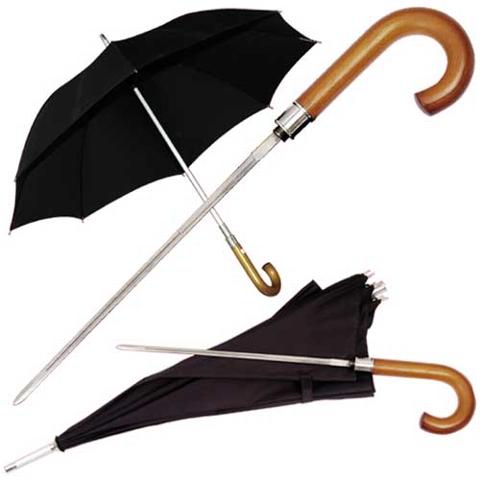In today’s entry for her recurring guest blog, titled CliffNotes,
Jane Remer tackles arts education advocacy. Never one to mince words, Jane gives us all lots to think about. RK
*************************************************************************************************************
As I have said for years, the arts education community is not a true “field,” as it is riddled with great diversity of philosophy, purpose, method, content and ways of accountability. Arguing or advocating for financial and other support can be a tricky business because different “camps” make different claims, and it is often difficult to know what “outcomes” arts groups are campaigning for. As I see it, there are three major (often overlapping) positions when it comes to persuading, begging and bragging for financial support and recognition:
• The Human Intelligence and Development approach – Teaching and Learning, “we believe the arts are essential to every child’s cognitive, affective, social and physical growth and belong in the core of the curriculum alongside math, literacy, science, and social studies,” folk,
• The Moral Imperative approach – Enrichment and Exposure, “we believe every child deserves regular exposure to all the arts to enrich the quality of their lives and the culture of their communities, … and to build future audiences,” folk, and
• The Utilitarian Cake and Eat It approach – “Arts Integration, “we believe the arts are important vehicles and provide pathways for learning other subjects, skills, and concepts and should be woven into the curriculum to help teach math, literature, science, etc. folk. (Note: this definition is often tempered in writing with the caveat that the art form will receive equal treatment and attention, but in classroom actuality, time runs out and the study, skills and understanding of the art forms are more often than not forgotten or neglected.)
We may argue that these three “camps” are best seen as slices of a pie, or perhaps a Venn Diagram in which the four major art forms and some of the learning and other outcomes are the constants; everything else hugs to its “camp,” but I fear that picture is too simplistic. The possible variations of slicing and dicing are almost endless, and do not address or help solve the advocacy conundrum.
The issues are (1) whether there is or ought to be a consistent platform or position that would satisfy all camps and at the same time make a powerful argument for supporting the arts as education, and (2) which arguments are the most powerful. And the answer is, as always, it depends. If you are arguing for the arts as education of the human intelligence and development, your pitch is often about teaching and learning; the moral imperative tends to appeal strongly to the ethically and artistically inclined and weaker with the accountability crew, the policy makers and bottom line business people. The utilitarian approach appeals to all Americans who recognize the arts connection to other subjects as a pragmatic wedge in the schoolhouse door and a fair compromise between the teaching and learning and moral imperative approaches. Given the diversity of our community, I doubt there is a platform or set of arguments that would satisfy “the field.” Moving on, then, to issues around which we can perhaps coalesce.
What has always and still troubles me is that the arts community that makes such a significant and relatively expensive contribution to the education community is its own and almost only champion. We still haven’t figured out how to make aggressive allies and stalwart champions out of a critical mass of the schools and educators who are our regular partners or to whom we provide services. We have not learned how to convey the enormity of the contribution we make to teaching and learning, to the human psyche and ethical senses, or to the connection and illumination of other subjects and disciplines.
We tend to use apologetic phrases such as “we work with the willing” and “pockets of excellence” when defending our relatively small impact on general education. Things haven’t really changed that much since the sixties when we started our brands of arts education except that back then we really did have vibrant allies and champions in the U.S. Office of Education and the national elementary and secondary educational community, and the Humanities Endowment, to mention only a few. I attribute that support largely to the fact that we were part of a compensatory educational push in a broad social agenda for a Great Society which these days, the Obama administration only vaguely touches on.
We tend to settle for crumbs and call it progress, or leverage. We celebrate a token arts education “month” (just like a token Black History month), we make all the noise we can to draw attention to our work (successfully, but at best for a New York minute). We storm federal, state and local legislators’ offices with boasts and brags about isolated arts “services” and activities that in no way transmit the context, breadth and depth of our most serious, imaginative and even “scholarly” work, the idea of commitment over time, and stories of powerful instructional and collegial relationships built between classroom teachers, arts specialists and professional artists in their extended work with students and their parents.
As I wrote at length in Beyond Enrichment over a decade ago, it strikes me as foolhardy to claim and bray about a kaleidoscope of often unrelated activities that will simply serve to underscore and perpetuate our reputation of superficial, even trivial entertainers “so nice to have, but not necessary.” When we provide no indication of on-going planning, professional development, teaching and learning and sustained assessment, the seriousness of some of the arts providers work is lost in the carnival-like atmosphere.
Arts education deserves better advocacy than that. If we keep missing the boats that broadcast how hard we work as respectful, humble and committed partners to teach for deep understanding and extended learning in and through the arts, not isolated activities taught by those who come and go making no permanent dent in the school culture, we have only ourselves to blame if we are ultimately ignored both by the schools and the policy makers.
Let us get together to turn our swords into plowshares.
Jane Remer
October 1, 2009
************************************************************************************************************
JANE REMER’S CLIFFNOTES
We are at another rocky precipice in our history that threatens the
survival of the arts in our social fabric and our school systems. The
timing and magnitude of the challenges have prompted me to speak out
about some of the most persistent issues in the arts education field
during the last forty-plus years.
My credo is simple: The arts are a moral imperative. They are
fundamental to the cognitive, affective, physical, and intellectual
development of all our children and youth. They belong on a par with
the 3 R’s, science, and social studies in all of our elementary and
secondary schools. These schools will grow to treasure good quality
instruction that develops curious, informed, resilient young citizens
to participate fully in a democratic society that is in constant flux.
I have chosen the title Cliff Notes for this forum. It serves as
metaphor and double entendre: first, as short takes on long-standing
and complicated issues, and second, as a verbal image of the
perpetually perilous state of the arts as an essential part of general
public education. I plan to focus on possible solutions and hope to
stimulate thoughtful dialogue on-line or locally.
************************************************************************************************************
 Jane
Jane
Remer has worked nationally for over forty years as an author,
educator, researcher, foundation director and consultant. She was an
Associate Director of the John D. Rockefeller 3rd Fund’s Arts in
Education Program and has taught at Teachers College, Columbia
University and New York University. Ms. Remer works directly in and
with the public schools and cultural organizations, spending
significant time on curriculum, instruction and collaborative action
research with administrators, teachers , students and artists. She
directs the Capezio/Ballet Makers Dance Foundation, and her
publications include Changing Schools Through the Arts and Beyond
Enrichment: Building Arts Partnerships with Schools and Your Community.
She is currently writing Beyond Survival: Reflections On The Challenge
to the Arts As General Education. A graduate of Oberlin College, she
attended Yale Law School and earned a masters in education from Yale
Graduate School.
*************************************************************************************************************




Jane: I tried to get this on the blog but don’t know how.
“Reading all the comments above I fail to see much about children. What I do read has to do with politics, definitions of arts education, testing, and “…the thousand natural shocks (the arts are) heir to…”.
No wonder that teachers and school leaders fail to support us. They see most of us as purveyors of outmoded teaching strategies and peresenters of mediocre artistic content, whether presented by certified arts teachers or itinerant artist/teachers. .
Having taught, myself, in two of the most academic settings many years ago (the Great Neck schools and the Dalton School) I learned how the arts need to be viewed by our peers…as complementing everything that is good in a school curriculum focusing on child growth and development; supporting, not criticizing those whose active cooperation we most need. Only then will we deserve the respect and respectability enjoyed by other fields. (Forgive me for sounding more like Jane Austen than my good friend, Jane Remer.)
Until our rhetoric focuses on teaching and learning and not on seeming self-serving statements, philosophic or otherwise, no matter how elegantly stated, it may tragically be said that ‘..all else is vanity and vexation of spirit.'”
Jerrold Ross/Dean, St. Johns